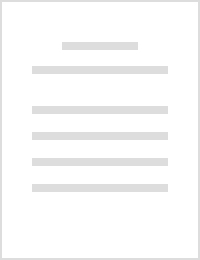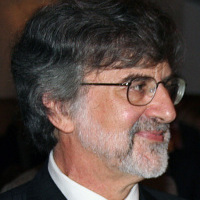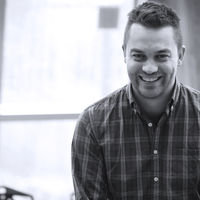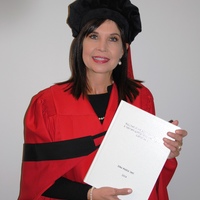Papers by R. Bandaranayake
Who wants to teach anatomy?
Medical Journal of Australia, Jun 30, 1979
ANATOMY is the Cinderella of the medical curriculum. Whenever the issues of curricular irrelevanc... more ANATOMY is the Cinderella of the medical curriculum. Whenever the issues of curricular irrelevance, of forgetting, of "unnecessary" detail. or of "curricular excision" are raised, the first example that usually springs to mind is anatomy. Yet it cannot be denied that anatomy, just as much as the other preclinical medical sciences, is basic to the study of medicine. Why, then, this step-motherly treatment? Often, one's past experiences with anatomy courses colour one's views about them; assumptions are made that little change has taken place in the way anatomy is taught. Often these assumptions are justifiable. This paper suggests ways in which preclinical and clinical teachers can join hands to give anatomy its appropriate place in the medical curriculum.
Education for Health: Change in Learning & Practice, 2001
Conclusion: T his prelim inary study suggests that V ITA L S could be an effective tool for im pr... more Conclusion: T his prelim inary study suggests that V ITA L S could be an effective tool for im proving clinical teaching. It is acceptable to students, faculty and m anagers of educational program m es. T he database re¯ecting their teaching and educational pro® les were used to provide clinical faculty with constructive feedback.
How to Plan a Lesson
Medical Journal of Australia, 1979
The Centre for Medical Education: an approach to upgrading health care through education
World hospitals, 1978
Curricular movement of Medical Education in Western Pacific Region
Korean Journal of Medical Education, 1970
What was that slide about?
The Medical journal of Australia, Jan 11, 1978
Hippocrates to Penfield: lessons for medical education
The Ceylon medical journal, 1993

An analysis of internship training in Sri Lanka
Medical education, 1981
The internship period is a critical phase in the continuum of training provided to medical studen... more The internship period is a critical phase in the continuum of training provided to medical students. An analysis was made of the tasks the intern medical officers in Sri Lanka are engaged in during their period of training in different clinical disciplines. Data was collected by direct observations by trained observers for a continuous period of 10 days and self-reporting by the interns at the two teaching hospitals and four of the provincial hospitals where interns are posted. The reliability of the data was high. The results indicated the wide differences in the learning experiences of the interns in important aspects of patient care in the different training situations. The non-availability of any guidelines to the consultants with respect to the training intended is another deficiency. The study shows an urgent need to implement a planned and monitored internship programme in the country.
How to write good multiple choice questions
The Medical journal of Australia, Jan 2, 1978
Can I really grade essays fairly?
The Medical journal of Australia, Jan 3, 1978
Who wants to teach anatomy?
The Medical journal of Australia, Jan 30, 1979

The interneship period is a critical phase in the continuum of training provided to medical stude... more The interneship period is a critical phase in the continuum of training provided to medical students. An analysis was made of the tasks the interne medical officers in Sri Lanka are engaged in during their period of training in different clinical disciplines. Data was collected by direct observations by trained observers for a continuous period of 10 days and self-reporting by the internes at the two teaching hospitals and four of the provincial hospitals where internes are posted. The reliability of the data was high. The results indicated the wide differences In the learning experiences of the internes in important aspects of patient care in the different training situations. The non-availability of any guidelines to the consultants with respect to the training intended is another deficiency. The study shows an urgent need to implement a planned and monitored interneship programme in the country.

The concept and practicability of a core curriculum in basic medical education
Medical Teacher, 2000
The core curriculum is defined as that which is common rather than essential. It is considered at... more The core curriculum is defined as that which is common rather than essential. It is considered at different levels: institutional, national and global. As its size is inversely proportional to variability in healthcare needs, the core becomes smaller as the geographical unit becomes larger. A rationale for identifying the core is established at all three levels. The risk of stereotypy among curricula and dampening of innovation can be avoided if a significant part of the curriculum is elective, and if schools are free to determine how the core should be achieved. Focusing exclusively on the minimum discourages excellence. Many of the potential disadvantages of a core curriculum can be avoided if the core is combined with options. The core should emphasize higher-order cognitive and process skills and should be reviewed intermittently in the light of trends in healthcare and education. It should be developed in consultation with curriculum implementers using a competency-based approach. In developing international standards, societal relevance of the curriculum should not be sacrificed at the altar of standardization. The scientific bases of medicine, process skills and desirable practices in educating the basic doctor are fertile areas in which to look for international standards.
How to Plan a Medical Curriculum
Medical Teacher, 1985

Implementing Change in Medical Education in Developing Countries
Medical Teacher, 1989
Medical schools in developing countries are constantly faced with the problem of adapting an inhe... more Medical schools in developing countries are constantly faced with the problem of adapting an inherited style of education to suit local needs and constraints. Often these needs have changed considerably since the curriculum was first established. Yet the difficulty of bringing about curricular changes, especially in conventional medical schools, is well known. This paper attempts to guide innovators in developing countries, but many of the suggestions are appropriate to all innovators. The issue of international standards is closely scrutinised, and their hypothetical nature revealed. The detrimental effect of national licensing examinations on curricular innovation is discussed. The futility of ad hoc changes and the need for a carefully thought out philosophy of change which leads logically to new ways of educating future professionals are stressed. Guidelines for maintaining an innovation and for evaluating its short- and long-term outcomes are developed.
Medical students' approaches to studying
Medical Teacher, 1996
... 18, No. ... Entwistle and his colleagues at Lancaster University (Entwistle et al., 1979; Ent... more ... 18, No. ... Entwistle and his colleagues at Lancaster University (Entwistle et al., 1979; Entwistle &Ramsden, 1983) in-cluded the two learning ... The 64-item inventory also incorporated ideas from Pask's research on learning strate-gies (Pask, 1976) and from Entwistle's previous ...
The ethics of student assessment
Medical Teacher, 2011

Medical Education, 1993
Successful innovation and change in the way medical students are prepared are notoriously difficu... more Successful innovation and change in the way medical students are prepared are notoriously difficult. The relationship between the administrative structures of the medical school and its teaching hospitals, other responsibilities ofits teachers and administrators, and the intricacies of the curriculum as a system of interrelated components, mean that any real change has wide repercussions. An opportunity for evaluation of a curriculum undergoing change was presented at the University of New South Wales, when the Faculty of Medicine introduced a new 6-year medical curriculum in 1988. The change was made to address a number of problems experienced with the old 5-year curriculum. The Course Evaluation Committee was in a unique position to conduct an ongoing evaluation of the new curriculum, year by year, as it was being introduced. A method for obtaining feedback from both staff and students on a medical curriculum undergoing change, is described. While some sample results are presented, the paper concentrates on the advantages and disadvantages of, and our experiences with, this method. Advantages include the specificity and timing of the information collected, and the high response rate. One disadvantage was the repeated use of the same cohort of students. Some staff still perceived the evaluation process as a threat, or were sceptical about the value and validity of student feedback. Whether staff acknowledged ownership of the new curriculum also affected the use of feedback.
Medical Education, 1993
The tracer concept was applied to evaluate the delivery of family health care and the training of... more The tracer concept was applied to evaluate the delivery of family health care and the training of family health workers. A retrospective evaluation permitted linking the products of care to process, input and context, by isolating and analysing potential factors contributing to a limited number of representative concerns. Contributory learning deficiencies identified in health workers, one input to health care as well as a product of training, enabled the evaluation of training programmes to be focused on related segments of the courses. The latter were evaluated through a pathway analysis which followed the same deficiency model as the evaluation of health care. Links were thus established between the traditionally compartmentalized training and service sectors in health.








Uploads
Papers by R. Bandaranayake